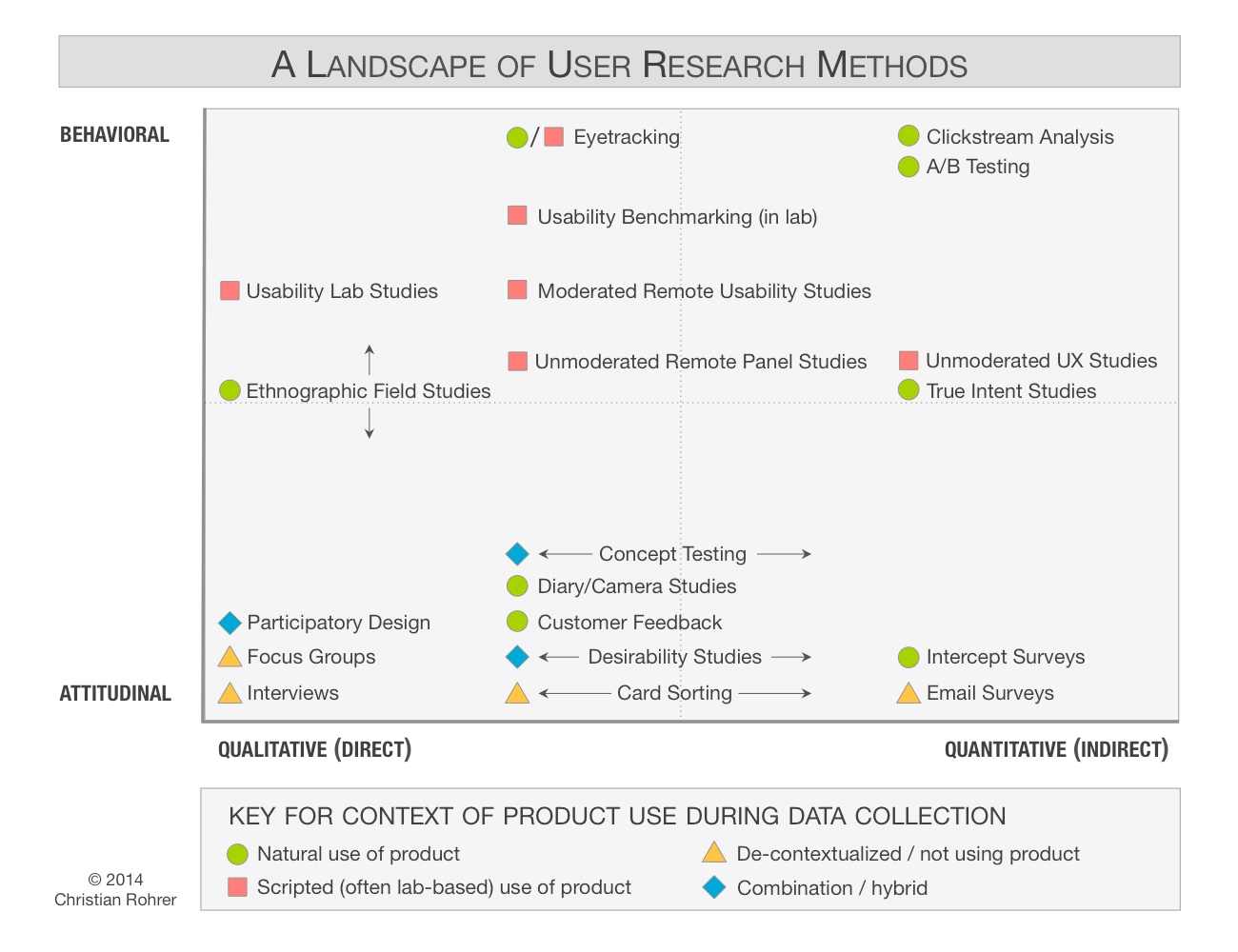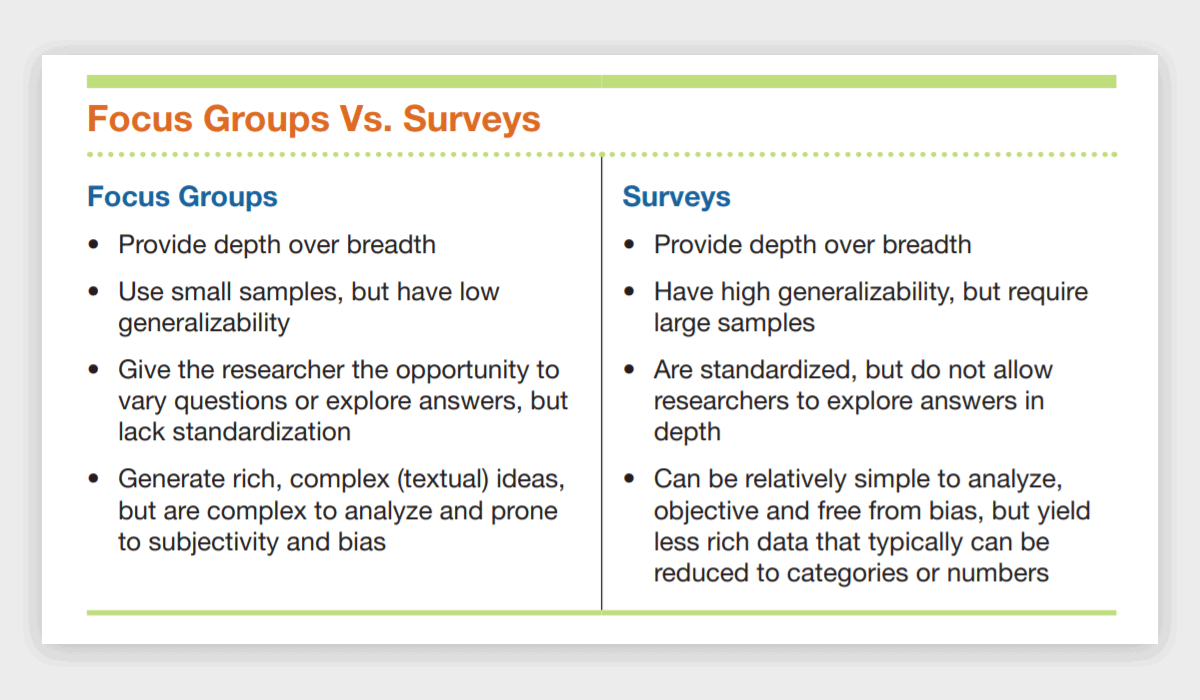
Today the markets are moving at a fast pace and in an unpredictable direction. Amidst such uncertainty, it’s extremely hard to determine the right course of action, especially when you are about to bring a new product or service to the market. So how can you reduce the risks of failure and predict potential ambiguities? By doing proper market research.
- What is Market Research?
- The Common Types of Market Research Techniques
- Quantitative Research Methods
- Qualitative Research Methods
- Secondary Research
- To Conclude
What is Market Research?
Market research is the process of analyzing the industry’s customers, their product/service preferences, and their affinity towards competition. By collecting the right data, business leaders can leverage market research to determine the viability of their offerings.
The market research process helps you:
- Scoop the size of your TAM (total addressable market), SAM (serviceable available market, and SOM (serviceable obtainable market).
- Perform lower-level market segmentation to identify smaller target buyer groups.
- Collect demographic, economic, and social insights about your target audience.
- Identify common customer behaviors, needs, and priorities.
- Draw conclusions and pinpoint potential market opportunities.
Also, by pursuing the right market research questions, you can further estimate your current market share (and those of your competitors), identify emerging industry trends, and determine potential challenges.
The Benefits Of Doing Market Research
A thorough industry analysis requires a significant time commitment, and oftentimes external help from market research firms (that’s costly). However, doing solid groundwork pays off.

There are several hard-to-beat benefits of doing marketing research before you launch a new product or service:
- Improved go-to-market planning: Understanding the size, competition, and intra-market trends are key to right-sizing your go-to-market strategy.
- Higher customer centricity: By knowing who your buyers are, what they prefer, where do they struggle, you can create offerings that hit a sweet spot with them.
- Data-backed decision making: When as much as 60-70% of new products fail (and the percentage is even higher for new companies/startups), it’s best to learn about the likely challenges, risks, and blockers in advance.
- Elimination of bias. Inherently our brain is wired for biased behaviors, whether we like it or not. In business, decisions based on gut feeling alone could lead to costly mistakes. Market research can bring new facts to the surface and challenge biased thinking in the boardroom.
- Better marketing. Increase the quality, efficiency, and personalization of your marketing campaigns (supporting the launch), by creating data-backed brand differentiators for all your marketing collateral.
- Performing comprehensive market analysis at the pre-planning stages of any initiative is the key to minimizing failure risks and maximizing market penetration pace.
We have a great choice of market research templates and market analysis templates for PowerPoint presentations and Google Slides that you can use for preparing an effective market research.
The Common Types of Market Research Techniques
Conversely, all market research methods can be grouped into:
- Primary research a comprehensive assessment of the in-house data you can obtain yourself (or commission others to do). The goal of primary market research is to determine how well your current practices work, what results they drive, and how you stack against the competition.
- Secondary research analysis of relevant data from external sources such as industry reports, governmental and educational institutions, and so on.
Each type of research is backed by a different set of market research tools and techniques that we’ll examine next!
Market Research Template by SlideModel
Quantitative Research Methods
As the name implies, quantitative research methods help you obtain hard figures that can be further analyzed using a variety of statistical models such as:
- Regression models
- ARIMA and other time series models
- Bayesian models
- Multivariate statistical models
- Principal component analysis models
Also, quantitative data is what we now often understand by the term Big Data huge datasets, analyzed with the help of data science and machine learning algorithms (powered by the aforementioned statistical models).
But for now, let’s focus on the main quantitative market research examples that us regular folks can use.
Surveys
Market research surveys are a fast, cost-effective way of getting new insights by asking respondents to choose among several pre-written answers.
The particular appeal of surveys is that they are versatile and can be adapted to collect data for a variety of research questions and see how the response changes across different audience samples. Perhaps, that’s why they are the most popular market search method.
As a market research method, surveys are great to collect data about:
- Customer loyalty (e.g. NPS surveys)
- Service level satisfaction
- Brand awareness and brand recall/recognition
- Pricing sensitivity
- Product/service preferences
UX Research
The goal of UX research is to understand how your audience interacts with your digital product or services e.g. what features they like? Which steps do they find confusing and so on?
Product-led companies, in particular, often use this method to ensure that their new products fully meet the target users’ demands and are intuitive to use.
The common quantitative methods of UX research are:
- Usability tests
- Tree tests
- Card sorting
- A/B testing
- Eye-tracking
- True intent studies
There are also plenty of other UX research methods that produce more qualitative data or data that sits in the middle of the quantitative vs qualitative spectrum as this chart from Nielsen Norman Group shows:

Moderated Customer Interviews
In-person customer interviews, where the participant replies are added to a questionnaire or grade-sheet can help collect a wider range of insights. Because on average market research surveys have a 10%-30% response rate, this leaves a lot of perspectives out of the subsequent analysis.
Interviews, in turn, have nearly 100% response rates. The wrinkle is that you’ll need much more resources and time to collect a good data sample (think scheduling 50+ interviews). This limits the reach of moderated interviews for general marketing research.
Qualitative Research Methods
Qualitative data stands for unstructured insights such as qualities or characteristics that cannot be fully measured with some metric. Think Voice of Customer data or sentiments, expressed on social media.
Qualitative data can be more challenging to collect, structure, and analyze. But it can give you access to more subtle insights that are impossible to mine from numbers. Performing content or thematic analysis enhances the rigor and interpretive quality of primary research, allowing researchers to derive meaningful and actionable conclusions from the rich qualitative data gathered through various methods.

Let’s take a look at popular qualitative market research methods:
Focus Groups
A focus group is an intentionally diverse group of pre-screened individuals, representing a certain market, whose reactions and responses to various questions are carefully studied. Focus groups are a great way to gauge broader feedback on your proposed product, user experience, or marketing message.
Here’s how they compare against surveys, according to ETR:

While focus group can help be helpful in competitor analysis, pricing analysis, and overall customer sentiment analysis, you should be prepared for some common pitfalls too:
- An inexperienced market research analyst may prepare a focus group script that does not help get the right information. Also, they may fail to steer the group discussion in the right direction, and thus, collect subpar data.
- Lack of diversity within the recruited group or improper balance of participants can lead to biases in the produced data due to group-think behaviors.
- Market research companies certainly can host more professional focus group discussions, but that often comes with a high price tag.
In-Depth Interviews
Free flow customer interviews are similar to focus group sessions, but the key difference here is that there’s no group pressure on the respondent. That often leads to more honest and unbiased replies.
Again, you’ll need to have an experienced interviewer for leading the conversation, so that each session ends up being productive.
Observations
Fly-on-the-wall observations of how your target audience engages with the product/service is another excellent way of collecting market data. Unlike focus groups and interviews, observative sessions are less expensive to organize, plus they can be done remotely.
But there are some limitations to this research method too:
- You can’t get an explanation of the reasoning behind the participants actions.
- The researcher will need to have a strong note-taking framework and tools to capture the needed data.
- To ensure accuracy, you’ll need to cross-validate your observational insights, using other research methods.
In essence, that’s how to conduct market research using primary research methods. Once you’ve exhausted your options, you should consider adding secondary research methods to your mix.
Secondary Research
Secondary research implores you to explore and analyze the findings, produced by others. Rather than going directly to the sources (aka your customers), you assess the conclusions, others have reached, based on their research.
Secondary research can be super valuable for competitive analysis (since you don’t have access to the data), as well as in cases when you are struggling to formalize the vector and main objectives of your primary research. Lastly, secondary research is much more budget-friendly, making it an excellent way to source some last-moment add-ons to your market research report.

Main Sources for Secondary Market Research
Industry publications: A good fraction of companies cross-domain transform parts of their internal primary research into public market reports. Think Salesforce State of The Marketing Report or Puppet’s annual State of DevOps report. These types of publications feature a ton of survey replies and other interesting data points you can use to back up your research hypothesis.
Beyond that, you can always discover solid market insights by sourcing reports from:
- Big 4 Consulting Companies (Deloitte, KPMG, PwC, EY), as well as other consulting and advisory companies such as Accenture, McKinsey, Gartner, etc.
- Consumer research companies such as the Pew Research Center.
- Local and international nonprofits.
Public databases: Governments worldwide run all sorts of tallies, describing the economic, social, and demographic state of affairs. Such databases can help you find some solid baseline numbers for your research or complement existing findings.
Here are several examples of solid data sources for market research:
- U.S. Government’s open data portal
- European Union open data portal
- U.S. Bureau of labor statistics
- CIA World Factbook
Educational and scientific sources: For more niche information, you can always tap into an array of recent scientific publications, reports, and findings summaries, published by scientific magazines or research/educational institutions.
While browsing scientific papers may seem intimidating at first due to complex language, anyone can learn to scan them to pick up the needed information.
To Conclude
To get consistently good insights, you must respect all the market research steps and use the right research methods and tools during them. Otherwise, you risk getting overwhelmed with the data and drawing eschewed conclusions. So here’s how to do market research:
- Define your key research objectives and key hypothesis first.
- Identify target buyer personas that you’d be researching
- Line up several groups of participants.
- Begin with secondary research or observation sessions to probe and refine your hypothesis.
- Prepare the final line of research questions to ask during interviews/focus group sessions.
- Collect extra data using surveys, UX research sessions, and moderated interviews.
- Analyze and summarize the insights
- Consider further research primary or secondary to verify your findings.
Lastly, pack all your findings into a report and supporting presentation.

